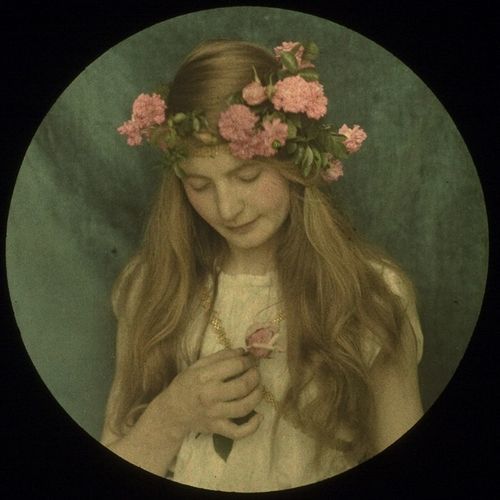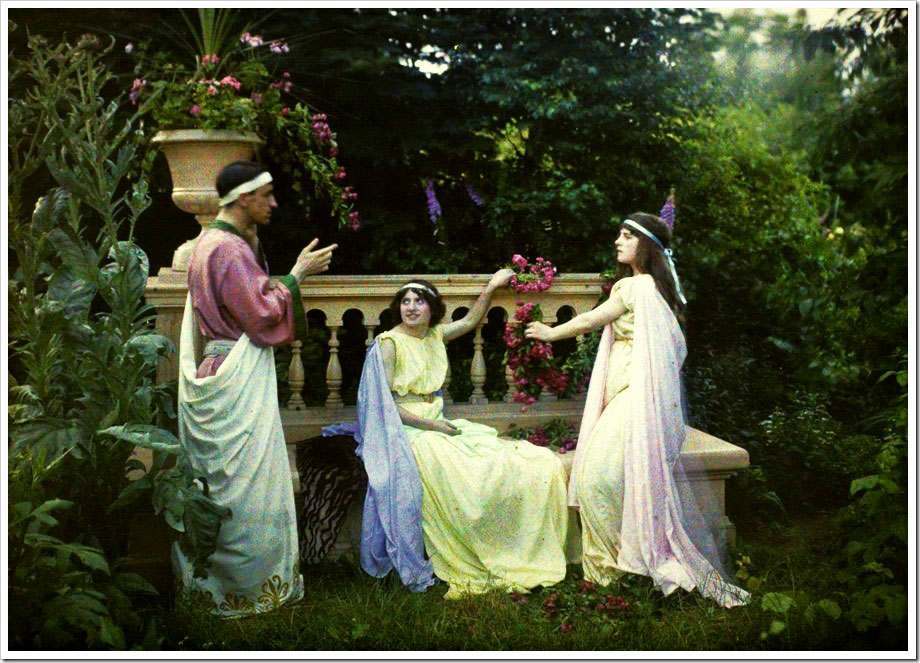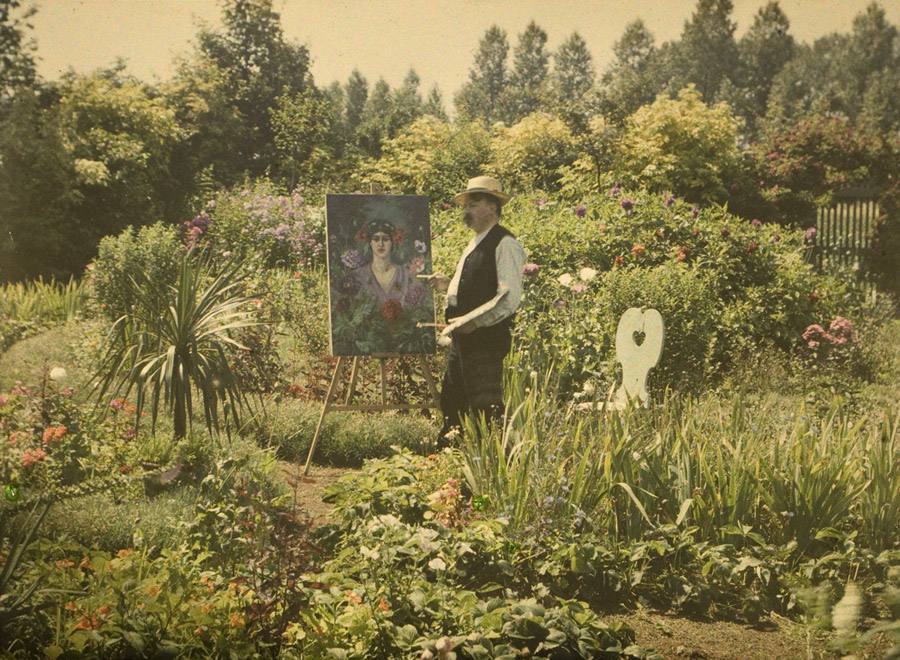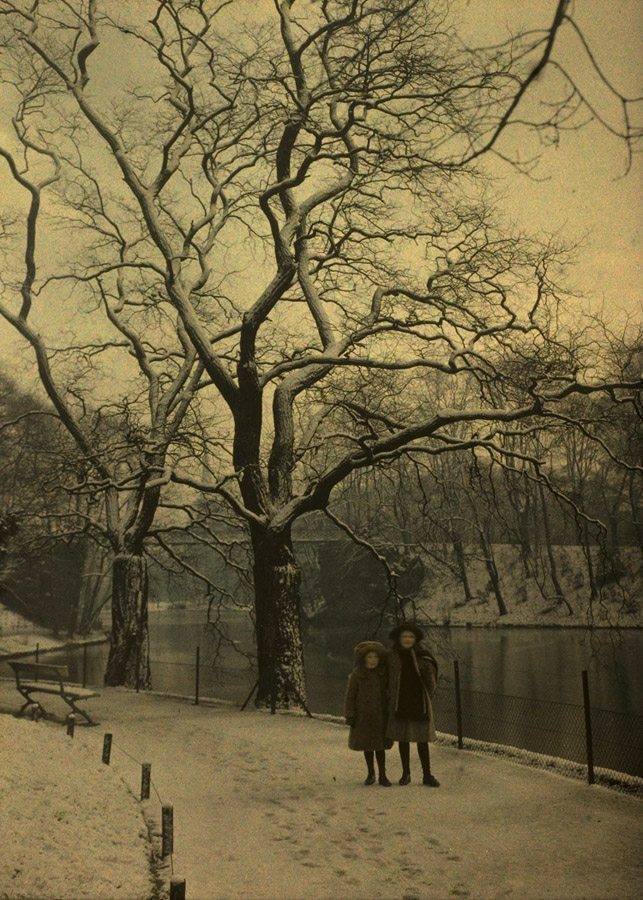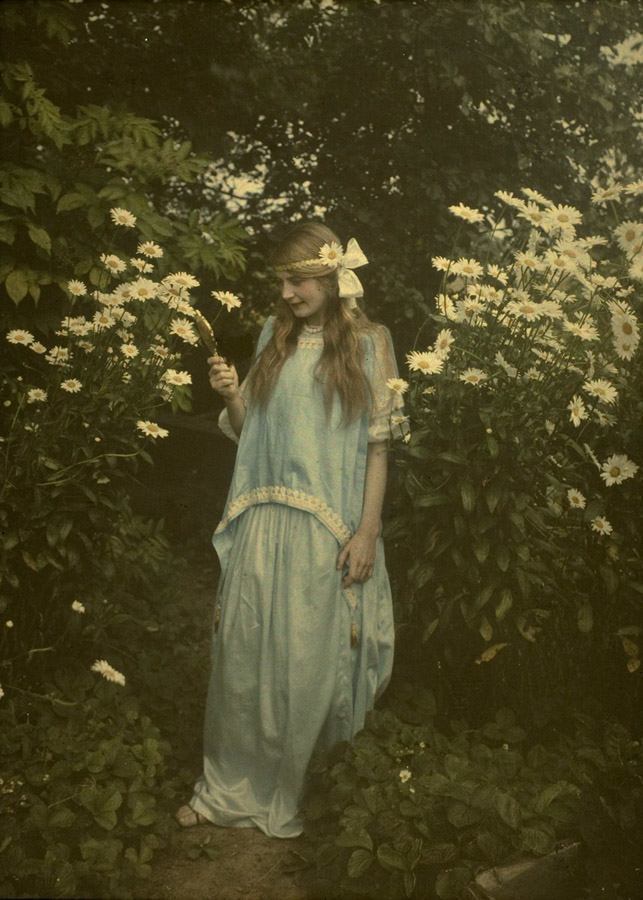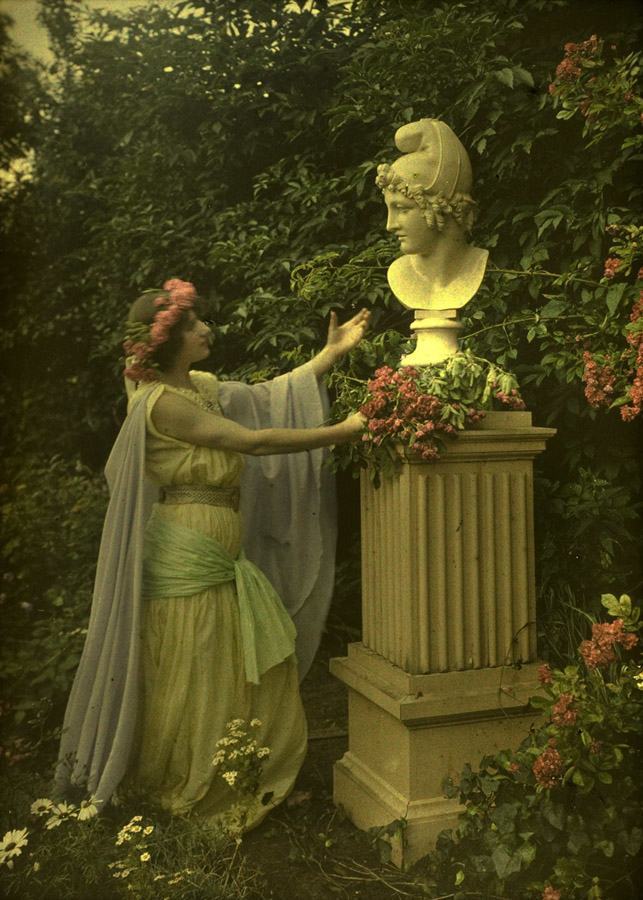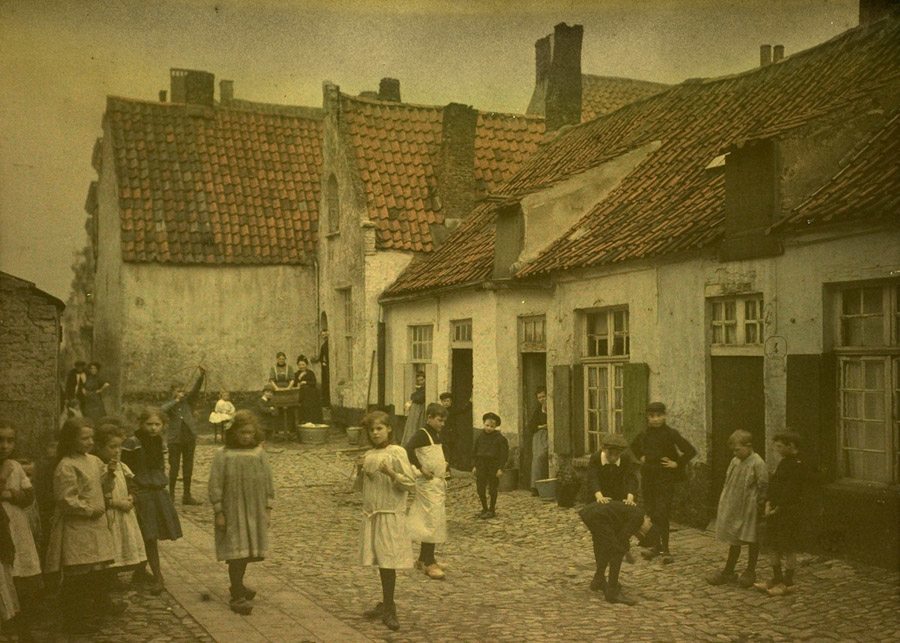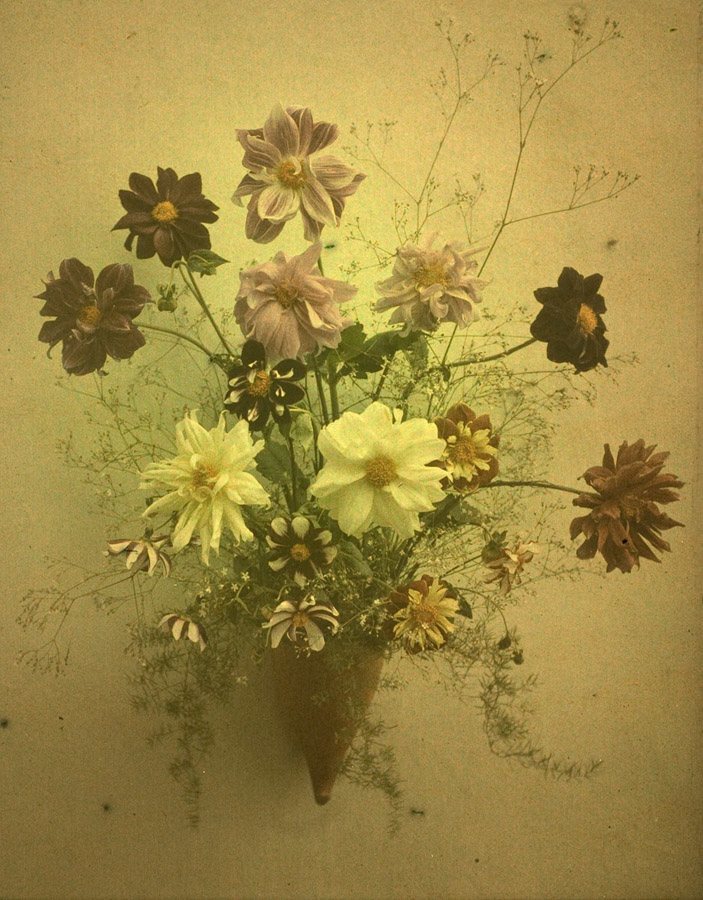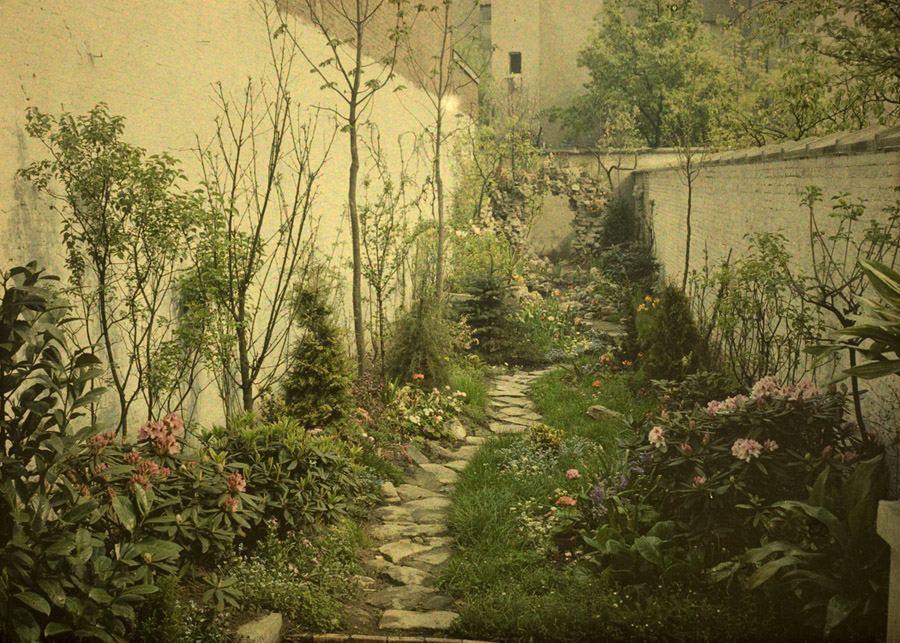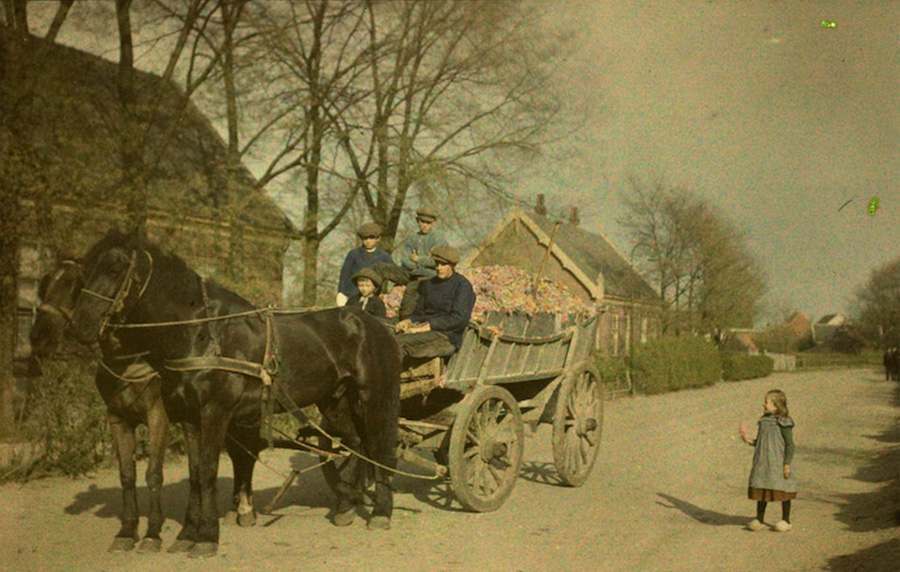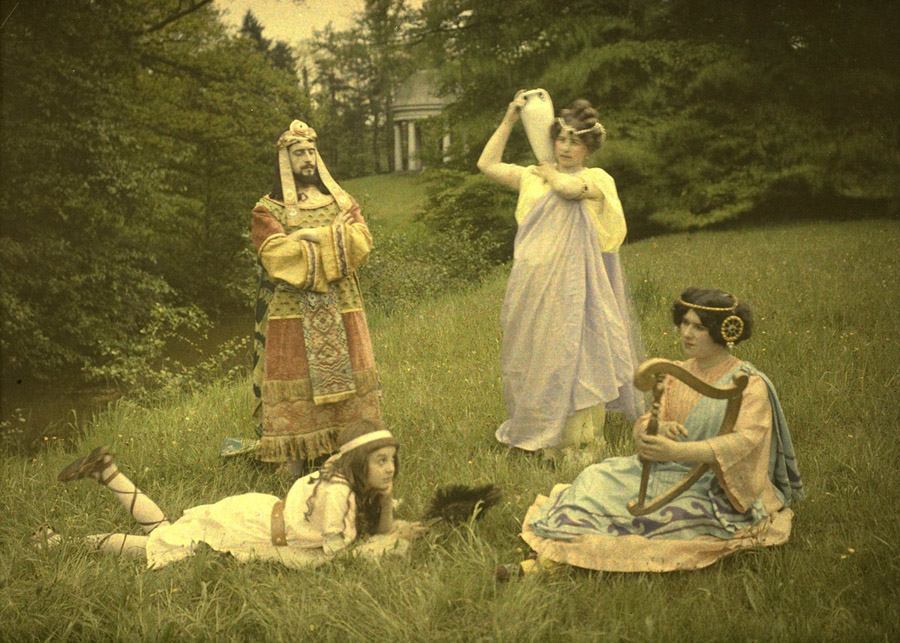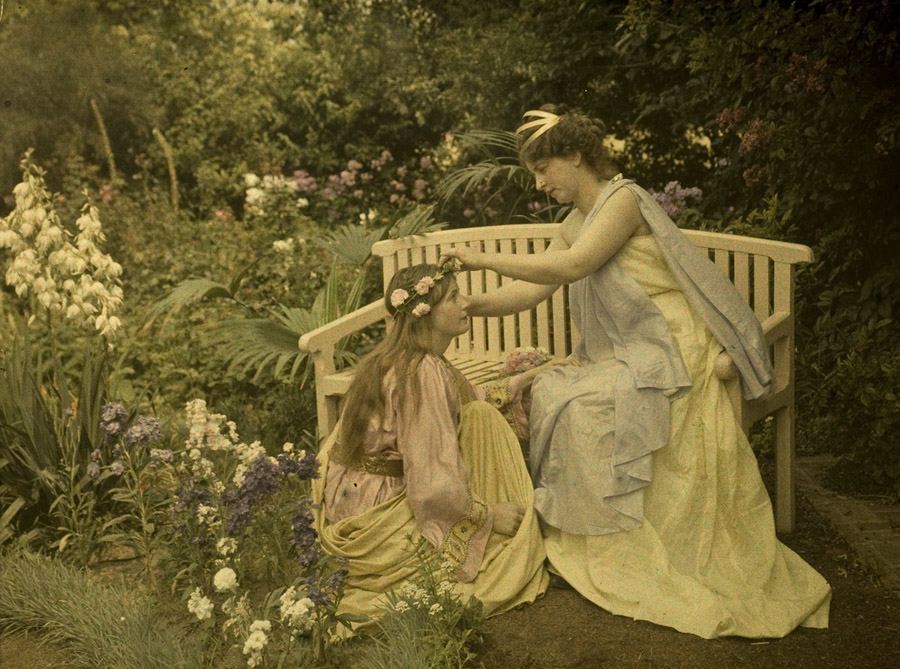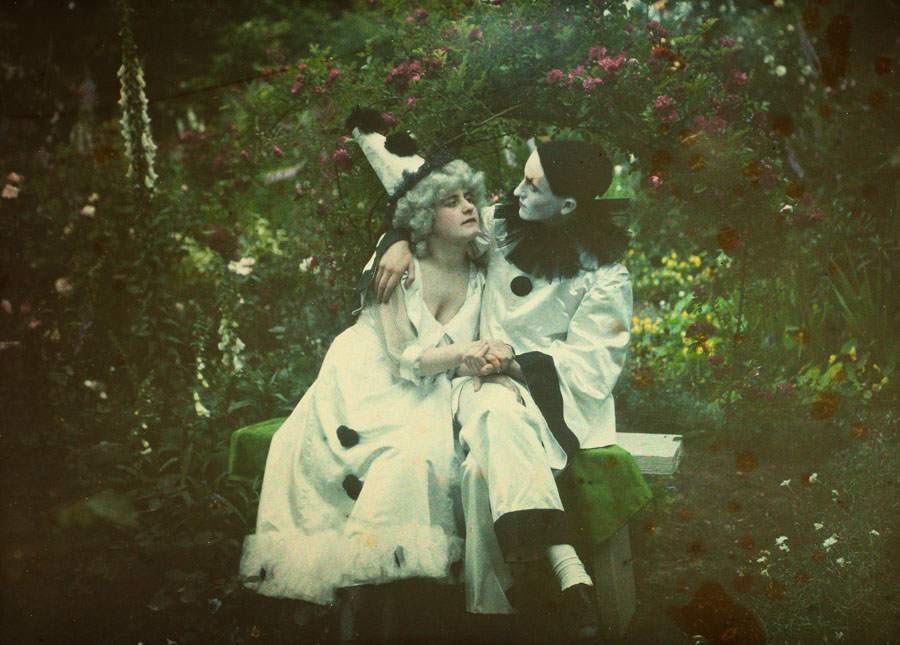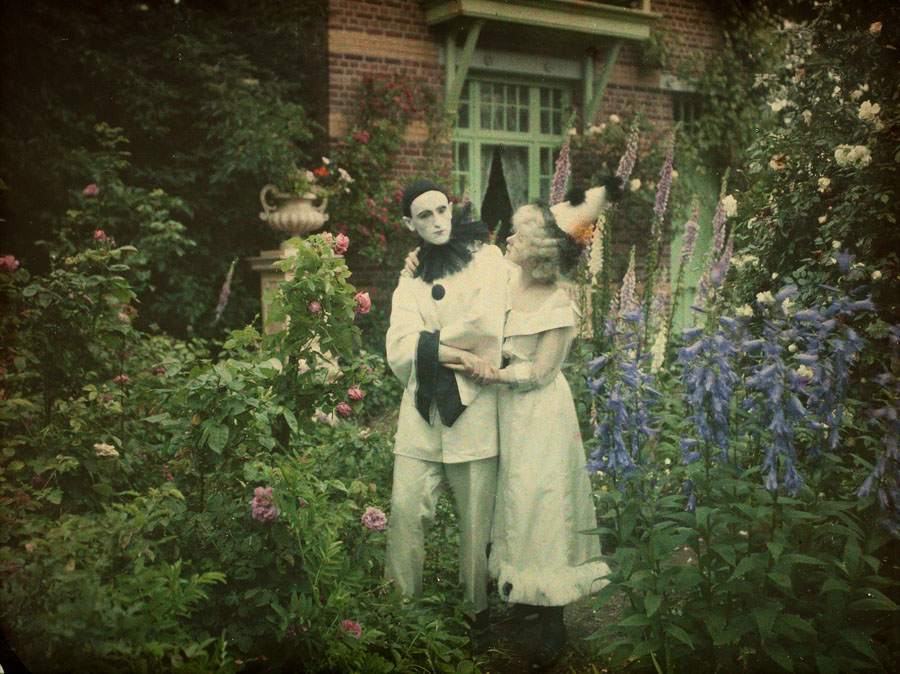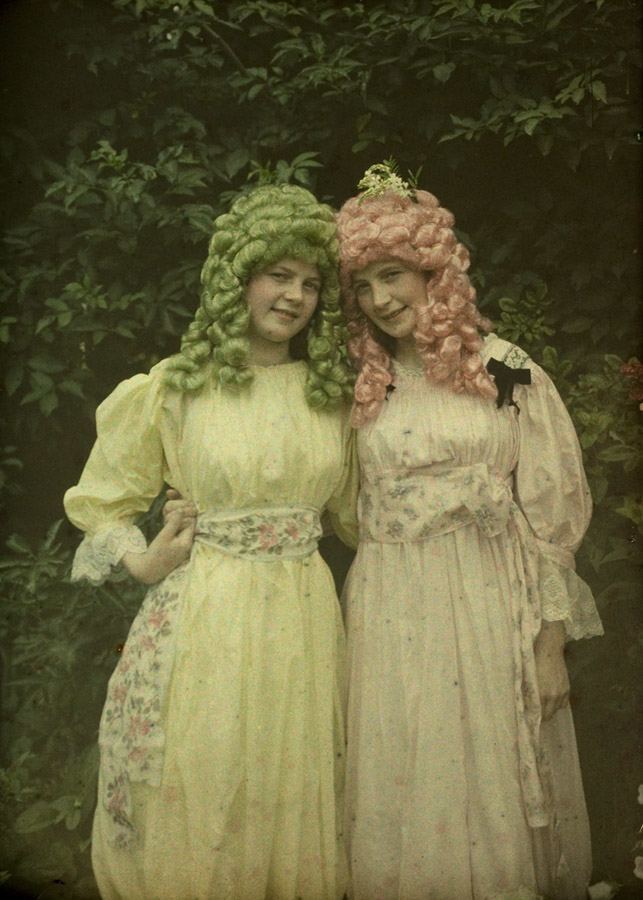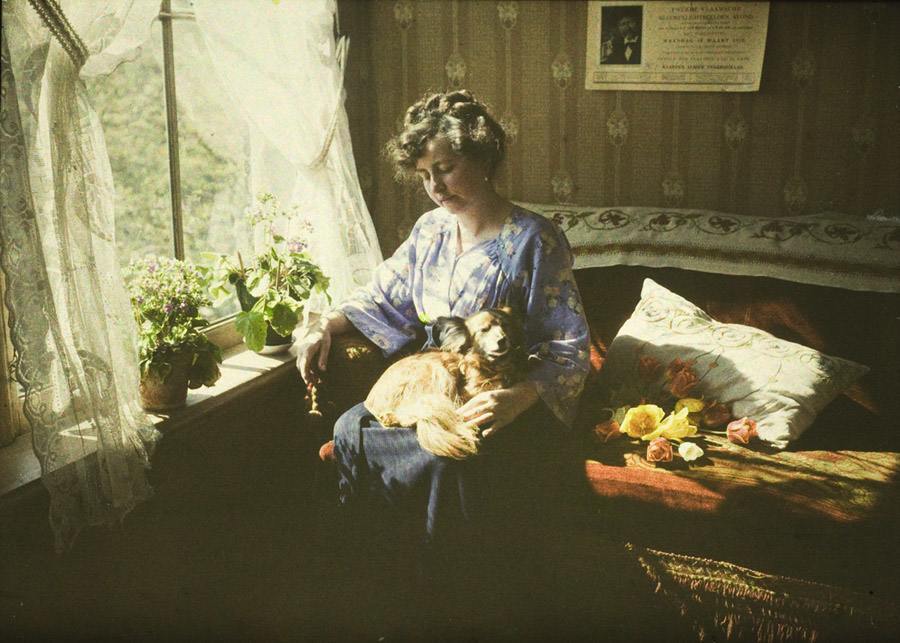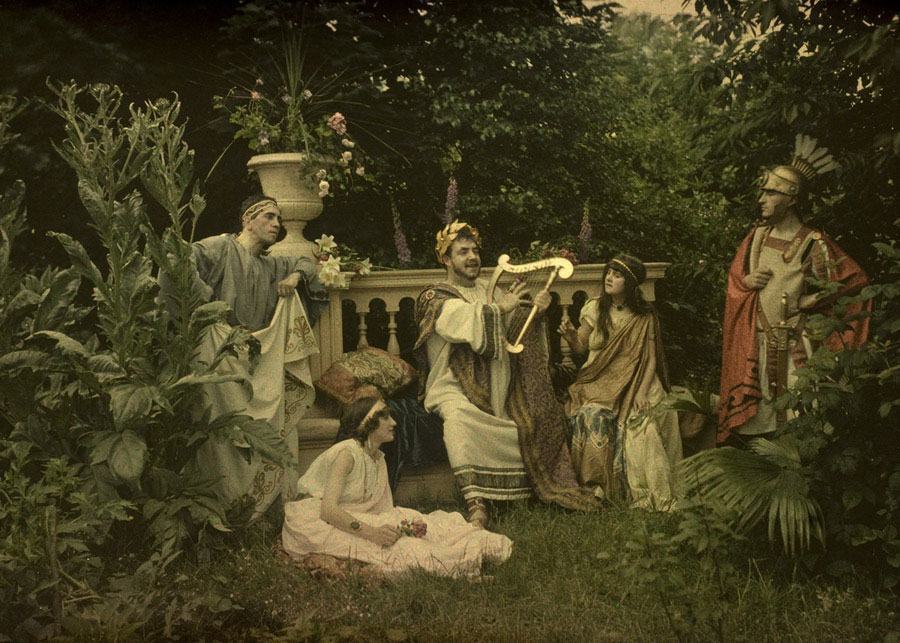Belgian painter Alfonse Van Besten (1865-1926) embraced technology, utilising innovative color processes to transfer black and white photographs into vivid, at times lurid autochromes. The tableaux of his autochromes (a technology patented by the Lumière brothers in 1903 and the first colour photographic process developed on an industrial scale) are often bucolic and romantic. Demure ladies and girls pose in flowers and robes. Men in the glade play at dressing up in togas, revisiting moments from ancient history. We sense a class divide. Whilst the clean-complexioned relax in lush surrounds, working women are elbow-deep in laundry; men is dark, color-resistant overalls unload a barge.
Copyright: Florent Van Hoof’s excellent website on Belgian Autochromists
Would you like to support Flashbak?
Please consider making a donation to our site. We don't want to rely on ads to bring you the best of visual culture. You can also support us by signing up to our Mailing List. And you can also follow us on Facebook, Instagram and Twitter. For great art and culture delivered to your door, visit our shop.
